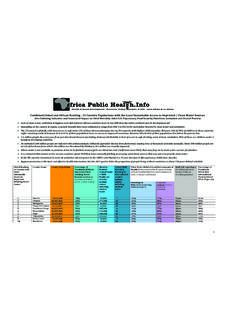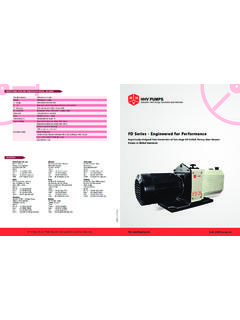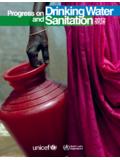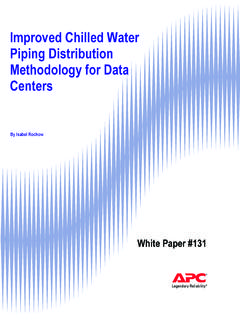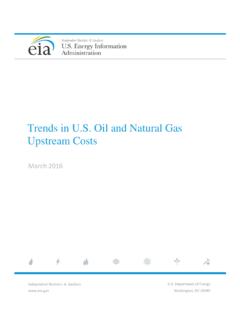Transcription of IMPROVED SNAILS FARMING - Food and …
1 Moving forward in the Implementation of Non-Legally Binding Instrument (NLBI) on All Types of Forests in Liberia, Nicaragua and the Philippines: A contribution to Reducing Deforestation and forest degradation FOREST INSTRUMENT LIBERIA FARMER LEVEL TECH - NOTE IMPROVED SNAIL FARMING With support of ii The views expressed in this information product are those of the author(s) and do not necessarily reflect the views of BMELV, FAO, FDA, NFP Facility. April 2013 iii Acknowledgement This tech note has been developed by Mr. Ezekiel Tyre Freeman. Several people participated in the preparation of this document and delivery of the training of trainers. Ms. Charlotte Lietaer, FAO Rome made valuable contributions to improve the content of the document. Mr. Sormongar S. Zwuen, , National NLBI project coordinator, Mr.
2 Joseph Boiwu, FAO Representative Operations Assistant and Dr. Jhony Zapata, FAO/FFF Rome provided overall guidance. Mr. Edward Kamara, Manager Forest Products Marketing and Revenue Forecast, FD, Mr. Edward Suloe, CFDC Facilitator made contributions for the piloting of this document and Marco Perri FAO/FFF for the layout and formatting. Sincerest gratitude goes to Ms. Eva Muller Director, Forest Economics, Policy and Products Division, FAO for her leadership and strategic guidance. Special recognition goes to the Federal Ministry of Food, Agriculture and Consumer Protection (BMELV) of Germany for the financial support provided. iv Preface In May 2007, the National Forum on Forests (UNFF) adopted the Non-Legally Binding Instrument on All Types of Forest (NLBI), which is commonly called the Forest Instrument.
3 This significant international consensus was reached to boost the implementation of sustainable forest management (SFM), and thus to maintain and enhance the economic and environmental values of all types of forests, for the benefit of present and future generation. Most specifically, the Forest Instrument is to: (i) Strengthen political commitment and actions at all levels to effectively implement SFM, (ii) Enhance the contribution of forests to the achievement of the international agreed development goals including the MDG, and (iii) Provide a framework for national action and international cooperation. The overall objective of the project is to support Liberia, Nicaragua and the Philippines, on a demonstration basis, to move forward in the implementation of the Non-Legally Binding Instrument on all types of forest.
4 Towards this end, an agro forestry component under the Project is providing intensive training to rural communities in three Counties, including Nimba, Grand Gedeh , and River Gee respectively in the areas of beekeeping and snail FARMING and total of 60 farmers were trained. There isn t any real history on were SNAILS eating started from or when people started eating snail. In Liberia, edible SNAILS can be found in the forest, in the swamp and on garbage sites. People gather SNAILS , eat them and sell the remaining as a way to make money. This Farmers level Tech-Note aims to provide inspiration to farmers who would like to produce SNAILS on a small scale for eating or selling. It is not for farmers who want sell or export SNAILS in large-scale.
5 The tech-note is focused on the three types of edible SNAILS that are common in Liberia, the forest snail or giant African snail (Achatina achatina), the swamp snail (Archachatina marginata), the city girl (Achatina fulica). Through this publication, FAO and FDA, Forest Development authority of Liberia (FDA) want to contribute to the income generation and food security of the Liberian farmers. Jean-Alexandre Scaglia Harrison S. Karnwea, FAO Representative in Liberia Managing Director , FDA v Table of Contents Acknowledgement .. ii Preface .. iv 1. Introduction .. 1 2. Advantages and disadvantages of SNAILS FARMING .. 2 Advantages of SNAILS FARMING .. 2 Disadvantages of SNAILS FARMING .. 2 3. Suitable tropical snail species for FARMING .. 3 4. Choosing a site .. 4 5. Soil characteristics.
6 4 6. Constructing a snailery .. 5 7. Choosing a system: the options .. 6 8. Types of snail food .. 11 9. Breeding and management .. 13 Selecting breeding stock .. 13 Nursery .. 14 Rearing density .. 15 Seasonal and daily management .. 15 Snail FARMING tools and equipment .. 16 10. Predators, parasites and diseases .. 17 11. Processing and consumption of snail meat .. 19 Processing of snail meat .. 19 Consumption of snail meat .. 20 vi 1 1 Introduction We do not have any real history were SNAILS eating started from or when people started eating snail. In Liberia, edible SNAILS can be found in the forest, in the swamp and on garbage sites. People gather SNAILS , eat them and sell the remaining as a way to make money. This Farmers level Tech-Note aims to provide ideas to farmers who would like to produce SNAILS on a small scale for eating or selling.
7 It is not for farmers who want sell or export SNAILS in large-scale. The tech-note is focused on the three types of edible SNAILS that are common in Liberia: The forest snail/Giant African snail (Achatina achatina) The swamp snail (Archachatina marginata) The city girl (Achatina fulica) 2 2. Advantages and disadvantages of SNAILS FARMING Advantages of SNAILS FARMING Environment SNAILS are environment-friendly, because, unlike poultry or pigs, neither the snail nor its droppings smell offensively. SNAILS can also be reared in the backyard. Also, SNAILS manure improve the organic content of the soil. Input Capital, technical, labor and financial inputs in simple snail FARMING are relatively low compared to those in other types of livestock FARMING (poultry, pigs, goats, sheep, cattle).
8 Snail meat Snail meat is a good source of protein. It is rich in iron and calcium, but low in fat and cholesterol compared to other protein sources like poultry and pigs. Disadvantages of SNAILS FARMING Climate Without expensive artificial means of climate control, snail FARMING is restricted to the humid tropical forest zone, which offers a constant temperature, high relative humidity, preferably no dry season, and a fairly constant day/night rhythm throughout the year. Cultural limits Snail meat is considered a delicacy by some, whereas others will not even touch it for religious or cultural reasons. Growth SNAILS are relatively slow-growing animals. Furthermore the consumable meat makes up only 40% (maximum!) of the snail's total live weight.
9 Consequently snail FARMING is not a way to make money quickly! SNAILS as a pest SNAILS that have escaped from a farm, or been dumped by a farmer, may quickly develop into a serious pest in agriculture. For these reasons it must be emphasized that snail FARMING should be seen as only one component in a diversified FARMING venture. But there are many examples of cases in which giant African land SNAILS (GALS) were introduced to other parts of the world for FARMING , but were eventually dumped (or allowed to escape) into the wild for lack of a market. Once the SNAILS have been introduced, dumped or allowed to escape, they develop into agricultural pests. Without any natural elements, they end up destroying a wide range of agricultural crop and causing considerable economic damage.
10 Achatina fulica (city girl in local language) has a particularly poor reputation in this respect. The giant African SNAILS /forest SNAILS are considered a delicacy by people accustomed to 3 consuming them, whereas other people, even within the same country, will not even touch, let alone eat them. For that reason, don't start FARMING SNAILS unless you are absolutely sure someone will buy or eat them. 3. Suitable tropical snail species for FARMING Scientific name Local names/Liberia Other names used Achatina achatina Forest snail Giant African snail, Tiger snail Archachatina marginata Swamp snail Big black snail, Giant African land snail Achatina fulica City girl Garden snail, Foolish snail Forest snail Swamp snail City girl 4 4. Choosing a site SNAILS are good at escaping from enclosures.










